Random Noise 03
Random Noise 3
Spooky? Yes. Effective? Yes.
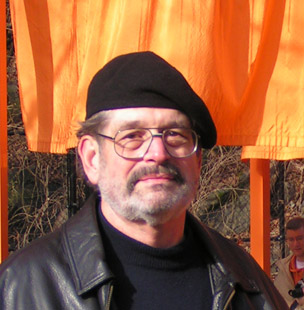 In my first Random Noise column, I touched briefly on two tweaks I’d like to return to now, along with a third from Acoustic Revive: the RD-3 Disc Demagnetizer, the RIO-5 II Negative Ion Generator, and the recent arrival, an RGC-24 Grounding Conditioner. The Japanese company’s American distributor, Lotus Group USA, prices them thus: RD-3, $399; RIO-5 II, $595; RGC-24, $450. You’re quite right, we’re not in Filene’s Basement.
In my first Random Noise column, I touched briefly on two tweaks I’d like to return to now, along with a third from Acoustic Revive: the RD-3 Disc Demagnetizer, the RIO-5 II Negative Ion Generator, and the recent arrival, an RGC-24 Grounding Conditioner. The Japanese company’s American distributor, Lotus Group USA, prices them thus: RD-3, $399; RIO-5 II, $595; RGC-24, $450. You’re quite right, we’re not in Filene’s Basement.
The three Acoustic Revive pieces are the work of Ken Ishiguro, who, to judge from results, is a member in good standing of a Japanese elite of extreme audiophilic tendencies. (I learned of Mr. Ishiguro’s role from Lotus Group’s Joe Cohen, who has provided me with information and insights –– and, more important, whose impressions of what these tweaks accomplish correspond with my own.) And here I should add that Aurum Acoustics’ Derrick Moss, the designer of my Integris CDP, put me on to the RD-3. Derrick has the discontinued Furutech version manufactured under license from Acoustic Revive. As far as I’m aware, he hasn’t yet looked into the RIO-5 II or RGC-24. (I’m out here on a limb, alone. Was that a cracking sound…?) Please understand, I cannot tell you why this stuff works. I can only report that it does.
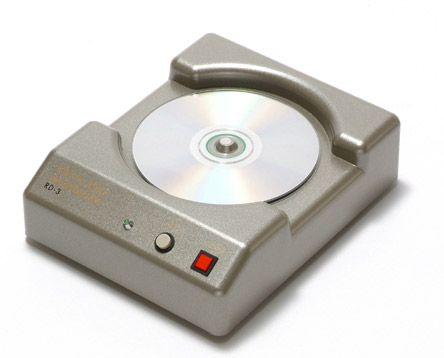
To begin, then, with the Disc Demagnetizer: The story goes that a digital disc’s label side is printed with colors often containing small amounts magnetic materials and, further, that the disc’s foil substrate likewise contains yet more minute amounts of magnetic impurities. That doesn’t explain why a laser reading zeroes and ones should be affected by magnetic distractions. Doesn’t matter. I’ll repeat it with my dying breath: the true blue subjectivist responds to what he hears. When one has been around hi-fi for a very long time, he’s impervious to experts, none of whom he understands anyway, taking opposing positions on this or that hot-button topic.
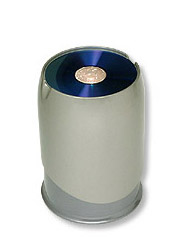 So let’s move right along to a yet deeper mystery: the RIO-5 II Negative Ion Generator. It makes a difference. “That’s nice, Mike. How does it work?” I haven’t a clue. We fly, gentle reader, by the seat of our pants. I can only report that a 14-second stream of fan-driven heat a halogen bulb creates passes upward through a layer of screen-enclosed pellets consisting of tourmaline and a few secret ingredients. Tourmaline, which my New Shorter Oxford Dictionary defines in part as “a semi-precious stone […] used […] for its pyroelectric and polarizing properties in electrical and optical instruments,” is reputedly rich in negative ions. (Room air purifiers have been using negative ion generators for ages.)
So let’s move right along to a yet deeper mystery: the RIO-5 II Negative Ion Generator. It makes a difference. “That’s nice, Mike. How does it work?” I haven’t a clue. We fly, gentle reader, by the seat of our pants. I can only report that a 14-second stream of fan-driven heat a halogen bulb creates passes upward through a layer of screen-enclosed pellets consisting of tourmaline and a few secret ingredients. Tourmaline, which my New Shorter Oxford Dictionary defines in part as “a semi-precious stone […] used […] for its pyroelectric and polarizing properties in electrical and optical instruments,” is reputedly rich in negative ions. (Room air purifiers have been using negative ion generators for ages.)
Finally, we come to the RGC-24 Grounding Conditioner. At one end of a length of sheathed copper wire resides a spade lug convertible to an RCA male the center post of which is Teflon. It’s the RCA’s outer ring that makes electrical contact. You either fix the lug to a preamp’s external screw-head or grounding post or plug the RCA into a vacant input. The wire’s other end attaches to a hefty, handsomely machined puck filled with granules of various ores.
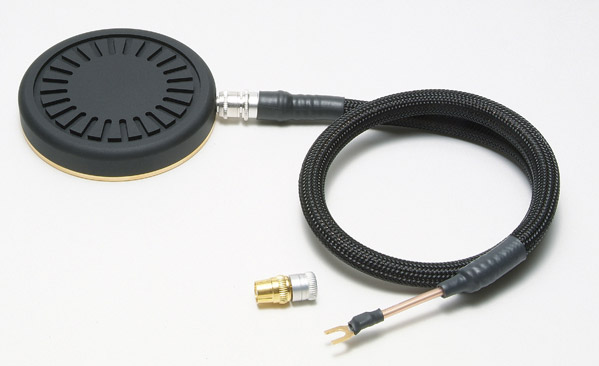
As an ethical matter, I couldn’t say much about the Disc Demagnetizer and Negative Ion Generator in that earlier column. A review I’d written for another Internet publication was running at the time. And now I have the Grounding Conditioner to include in my remarks.
In that review, I reported hearing the Disc Demagnetizer making the greater difference. In discussing this with Joe, he mentioned a California dealer who judged the Negative Ion Generator the more powerful tweak. With respect to my own sound system, I’m still of the opinion that the RIO-5 II embellishes what the Disc Demagnetizer accomplishes. I hear the latter extracting a degree of grain as it contributes to a larger, better distributed soundfield. The RIO-5 II does something similar, yet subtly different: the soundfield achieves a heightened degree of realism, dimension and perhaps –– just perhaps –– a touch of width. And, also perhaps, a touch of smoothness. It’s not that the sound has shed grain. It’s more a perception of … (and here words fail). The RIO-5 II’s instructions advise treating a disc’s two sides. Joe prefers treating just one, label side down. We agree that doing both sides can sometimes create an excessively diffuse sound. (These effects will wear off in time.)
Again with respect to my sound system –– a reviewer cannot say so too often –– the Grounding Conditioner largely affects soundfield depth. Most significantly, I hear the RD-3, RIO-5 II, and RGC-24 operating in a fascinating synergy. Together, they’ve elevated my sound system’s performance.
However, to return to that dealer’s opinion of the RIO-5 II’s contribution (and belabor a point), anything I or any subjectivist reports about how something sounds –– with particular respect to better or worse –– is utterly, absolutely, irrevocably system- and bias-dependent, with the greater emphasis perhaps on bias. We audiophiles maintain a sonic ideal in a corner of our minds, and experience has taught me that these ideals can differ to startling degrees. I’m saying in effect that I hear this AR trio as a keeper, and if I’ve succeeded in piquing your interest, I’ve done my part. (Some of the recordings I listened to in evaluating the AR pieces are discussed below.)
Word of caution. The instructions are in Japanese. Joe, a most affable fellow, will be delighted to provide whatever needs explaining. If you link to Acoustic Revive atwww.LotusGroupUSA.com, you can read about AR’s products in that peculiarly pungent English our Japanese chums think adequate. (Ha! When Zen masters boogie.)
***

Recommended recordings
I’d best begin by explaining that I’ll be commenting much of the time on recordings few reviewers mention –– at least those marginal, haunted souls who write for publications devoted in the main to audio hardware. But life is good! Clement Perry and I have an understanding. This is my sandbox.
So back we travel to the period called Modern. “Period,” as in fixed in place like a bug in amber. Back when. Finito. You really get to feel your age when the term no longer means Now. With respect to the directions in which art music sliced through the twentieth century, the issue for a number of intellectually disposed composers was –– and remains –– one of a dialectical imperative arriving at an outpost where, alas, it languishes at the end of a sparsely visited avenue. As an audience draw, the avant-garde holds all the appeal of a gift-wrapped turd. Do I care? Up the elite!
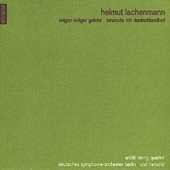
Notwithstanding the unorthodox sounds with which Lachenmann fills his scores, his music arrays by and large as a delicate filigree. Such is not the case for Iannis Xenakis (1922-2001). Xenakis, born in Rumania of Greek parents, spent much of his creative life in France, initially studying architecture with Le Corbusier, serving as the master’s assistant from 1948-60. During this time he applied himself to composition under the tutelage of Honegger, Milhaud and, most tellingly, Olivier Messiaen. Xenakis soon developed his own “voice,” characterized by gritty, often violent gestures and strokes. (As to his aesthetic’s provenance, Xenakis lost an eye as a Greek partisan fighting the Nazis.) Little in modernist music so neatly conforms to an essentially architectural term: brutalist. When Xenakis is hot, the hair on the back of your neck will stand on end.
 I heartily recommend two Mode releases: Iannis Xenakis / Music for Strings [Mode CD 152] andXenakis / Percussion Works [Mode 171 / 173, 3 CDs]. Mode is Brian Brandt’s creation. Brian, whom I’ve know for a very long time, is an avid new-music partisan. While I don’t love everything he’s issued, I’ve never caught a whiff of compromise. Would that I could say as much for a large number of labels.
I heartily recommend two Mode releases: Iannis Xenakis / Music for Strings [Mode CD 152] andXenakis / Percussion Works [Mode 171 / 173, 3 CDs]. Mode is Brian Brandt’s creation. Brian, whom I’ve know for a very long time, is an avid new-music partisan. While I don’t love everything he’s issued, I’ve never caught a whiff of compromise. Would that I could say as much for a large number of labels.
Music for Strings, performed by a German group, Ensemble Resonanz, under Johannes Kalitze’s direction, begins with Syrmos of 1959. This along with Aroura (1971), for 18 strings; Voile (1995), for 20 strings; and Analogigue A + B (1959), for nine strings and tape, provides an enlivening portrait of a great composer’s aesthetic. I am less taken with Theraps (1975-6), for solo contrabass, and Ittidra (1996), for string sextet.
Xenakis / Percussion Works operates as quite the perfect expression of the composer’s edgy, assertive style. The program’s nine works consist of two for percussion solo; four for percussion with instruments (oboe, harpsichord, male voice, and, again, harpsichord); and three with percussion ensemble. Percussionist Steven Schick conducts the ensemble, red fish blue fish.
The Lachenmann string quartet was recorded by Michael Sander for SDR (South German Radio), Stuttgart, in 1990; and the Tanzsuite mit Deutschlandlied by Rita Bobo and Manfred Hock for SFB (Sender Freies Berlin) in 1991. The composer supervised Sonomaître’s mastering. The sound is remarkably detailed, which is usually the case with these German radio productions.
Harry Vogt produced the Xenakis / Music for Strings recordings in Hamburg, Frankfurt and Köln with various engineers. Again, excellent detail and, important to a successful Xenakis realization, ample punch.
Steven Schick produced and Josef Kucera recorded the three-disc Xenakis percussion set at the University of Chicago’s Warren Studios. Beautiful sound: lightning transients, excellent dynamics, clean, taut bass. Remember, I treated the discs I’ve covered here with the three AV tweaks and have also been listening to them on a system that includes NuForce’s new (Version 2) amplifier board in a pair of Reference 9 amps (not my customary Reference 9 SE pair). The NuForce V2 board in the Ref 9 SE mono pair will be the subject of my next column. At least I hope so.
To say it again, Mode is a great 20th century / new-music label. Have a look atwww.moderecords.com.
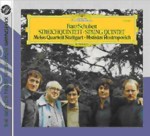 Cellist Mstislav Rostropovitch died on April 27, 2007. Rostropovitch was a number of things, all of them stellar: instrumentalist, conductor, Soviet dissenter and, as important to our culture as any of these, a man who commissioned music from our period’s finest composers. (Google Music Critic Tim Page’s Washington Post obit.) The Deutsche Grammophon label has come out with a new midline series, Grand Prix. DGG 477 6357 is a reissue of a 1978 release of Rostropovitch with the Melos String Quartet performing Franz Schubert’s String Quintet in C major, D. 965, recorded in Zurich in 1977. Most string quintets feature two violas. Schubert’s grand masterwork employs, for its period, an unprecedented second cello. This is a stand-out performance of oft-recorded music. Very little, past or present, rises to the Adagio’s heartbreaking heights. (I have another midline DGG, 477 045-2, three CDs, of the Emerson String Quartet performing the late quartets and String Quintet, again with Rostropovitch, originally released, full price, in 1988, 1990 and 1992. An EMI Classics 5 66942 2 reissue has the Alban Berg Quartet with cellist Heinrich Schiff in a 1983 performance –– another contender.)
Cellist Mstislav Rostropovitch died on April 27, 2007. Rostropovitch was a number of things, all of them stellar: instrumentalist, conductor, Soviet dissenter and, as important to our culture as any of these, a man who commissioned music from our period’s finest composers. (Google Music Critic Tim Page’s Washington Post obit.) The Deutsche Grammophon label has come out with a new midline series, Grand Prix. DGG 477 6357 is a reissue of a 1978 release of Rostropovitch with the Melos String Quartet performing Franz Schubert’s String Quintet in C major, D. 965, recorded in Zurich in 1977. Most string quintets feature two violas. Schubert’s grand masterwork employs, for its period, an unprecedented second cello. This is a stand-out performance of oft-recorded music. Very little, past or present, rises to the Adagio’s heartbreaking heights. (I have another midline DGG, 477 045-2, three CDs, of the Emerson String Quartet performing the late quartets and String Quintet, again with Rostropovitch, originally released, full price, in 1988, 1990 and 1992. An EMI Classics 5 66942 2 reissue has the Alban Berg Quartet with cellist Heinrich Schiff in a 1983 performance –– another contender.)
In terms of good sound, the DGG Grand Prix leaves nothing to be desired. If you’ve been hankering for a plunge into nineteenth-century German Romanticism, why not start at the pool’s deep end? Immersion in a great performance will do you no harm. Further, there’s no chlorine to mess with your eyes. Maybe a few tears –– that amazing Adagio. Difficult to predict.
See you next month.
Mike Silverton
![]()
Don’t forget to bookmark us! (CTRL-SHFT-D)
Stereo Times Masthead
Publisher/Founder
Clement Perry
Editor
Dave Thomas
Senior Editors
Frank Alles, Mike Girardi, Key Kim, Russell Lichter, Terry London, Moreno Mitchell, Paul Szabady, Bill Wells, Mike Wright, Stephen Yan, and Rob Dockery
Current Contributors
David Abramson, Tim Barrall, Dave Allison, Ron Cook, Lewis Dardick, Dan Secula, Don Shaulis, Greg Simmons, Eric Teh, Greg Voth, Richard Willie, Ed Van Winkle, and Rob Dockery
Music Reviewers:
Carlos Sanchez, John Jonczyk, John Sprung and Russell Lichter
Site Management Clement Perry
Ad Designer: Martin Perry





Be the first to comment on: Random Noise 03